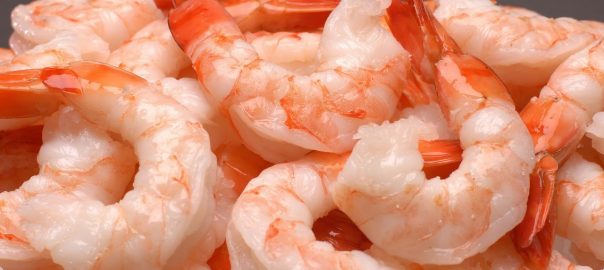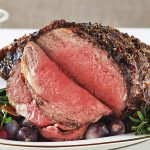
Low Carb Cooking with Shrimp
Cooking with Shrimp, the Low Carb Way
From a classic shrimp cocktail, to the most colourful Asian stir fry, to the best seafood chowder you’ve ever tasted, shrimp are an extremely popular ingredient in a wide range of cooking styles from around the world. They’re tasty, extremely high in protein, and a very healthy option, making them a great fit for the low carb lifestyle. However, you may be surprised to learn that not all shrimp are created equal. There are many different types and come from all corners of the globe, each with unique characteristics.
In this guide, we will help explain the different types of shrimp that you can find in grocery stores, fish markets, and restaurants from coast to coast, as well as provide a few cooking and preparation tips to help make sure that your recipes come out perfectly. Cooking shrimp properly isn’t really all that hard, but there certainly are a few things to keep in mind in order to get the best results. First, let’s take a look at the different kinds of shrimp that you’re likely to encounter when you go shopping.
Types of Shrimp
Gulf Shrimp – While this is a bit of a misnomer, Gulf shrimp actually can be one of three different varieties, including brown, pink, and white shrimps. Gulf shrimp are common and popular in North America and can be found on the menu of all types of restaurants and in grocery stores across the country.
Giant Tiger Prawn – This variety of shrimp tends to be on the larger size scale and is usually farmed in Asian countries. Because of its combination of size, flavour, and appearance, this is usually the shrimp that is favoured by fine dining establishments and gourmet chefs. Tiger prawns are also commonly available at supermarkets and fish markets, although because of their size and premium characteristics, they do tend to be more expensive than other varieties of shrimp.
Rock Shrimp – These shrimps prefer deep, cold waters like those in the Atlantic Ocean, and can be found all along the eastern seaboard of North America. Rock shrimp have a taste and texture very similar to lobster, making them a popular and less expensive option for many recipes that would normally call for lobster.
Spot Prawns – On the other side of North America, throughout the waters of the west coast, spot prawns are fished in large quantities and are commonplace on the menus of all kinds of restaurants and available in fish markets and supermarkets across the continent. Spot prawns are very similar to gulf shrimp in their taste, texture, and appearance.
Cleaning and Preparation
It’s very common for shrimp to be stored and shipped in the frozen state to greatly extend their usable life and make them available more widely around the world. Generally, this has no significant effect on the taste or usability of the shrimp, but true shrimp aficionados will stand by the old axiom for all kinds of seafood that ‘fresher is better’. Preparing frozen shrimp begins with thawing them completely over several hours in the refrigerator. Alternatively, you can also thaw them in a bath of cold water if you need them ready in less time.
If the shrimp have not been de-veined, you will want to do this prior to any further steps in preparation. The dark brown or black vein that runs down the back of the shrimp is actually a part of the digestive tract and is essentially just shrimp waste. If the shrimp you purchased have already had their shells split for easy peeling, removing the vein is easy by simply opening the gap in the shell and pulling it out. If the shell has not already been split, carefully use a sharp paring knife to slit the shell open along the back in order to access the area where the vein is.
Shell on or Shell Off?
There are some differing opinions on whether it’s best to peel the shrimp prior to cooking, or to leave them on, however, each method has advantages for different types of cooking styles and dishes. In general, if the shrimp will be presented as a centerpiece of the meal and a certain visual appearance is warranted, then it is recommended the shells remain on, to be removed at the time the meal is consumed.
Shells are also usually left on for grilling, since it helps keep the shrimp intact and also from drying out too much, but many grillers prefer peeled shrimp for the greater ease of eating when the meal is ready. For other meals where the shrimp is contained within the meal with many other ingredients, such as soups or stews like jambalaya and gumbo, it is usually better to peel the shrimp before cooking so guests do not need to worry about peeling each shrimp as they eat.
What About Pre-cooked Shrimp?
In a pinch, pre-cooked shrimp are a great time saver and add additional convenience to the preparation process. However, shrimp are very sensitive to overcooking, and can easily become tough and rubbery if heated for too long. For best results, it is always recommended that raw shrimp be used for the majority of recipes. That being said, if you’re in a hurry then pre-cooked shrimp should do the job just fine, as long as they are not re-heated for too long before serving.
Tips for Cooking Shrimp
Shrimp are a very versatile type of protein that can be prepared in many different ways to work with a variety of dishes and types of cuisine. Shrimp can be grilled straight on the barbecue, either on their own or as part of a kabob. Grillers will need to be very attentive to the shrimp, as they cook very quickly and only need a few minutes to turn thoroughly pink.
Shrimp can also be sautéed in a variety of sauces, such as garlic butter and a wide range of Asian sauces like sugar-free teriyaki or spicy hoisin sauce. Shrimp can be boiled to be used in pasta dishes or steamed alongside fresh vegetables, or dipped in your favourite seafood sauce. They can also be simmered as part of a seafood stew or chowder, or as part of a fresh soup.
Regardless of what method used to cook the shrimp, it’s important to note that they require very little time to cook completely, and the longer they are exposed to high temperatures the more likely they are to become tough. For example, in water that is at a rolling boil, your average sized shrimps take only about 3 minutes to become completely cooked. This is a good benchmark to keep in mind, but you will also become accustomed to the cooking times of shrimp in various instances the more you use them. Practice makes perfect!
Conclusion
If you’re getting tired of chicken or burned out on beef, why not try some tasty shrimp to add some variety to your weekly low carb meal plan? With these tips, we’re sure that you’ll find that cooking with shrimp can be very easy, and the resulting recipes are certainly delicious! Shrimp are a healthy protein option that make them a great fit for many low carb recipes from all different kinds of regional cuisine, from contemporary American creations to classic Asian dishes, and more. We hope that this set of tips has inspired you to head out to your local fish market or grocery store and pick up a big bag of delicious shrimp to experiment with.






